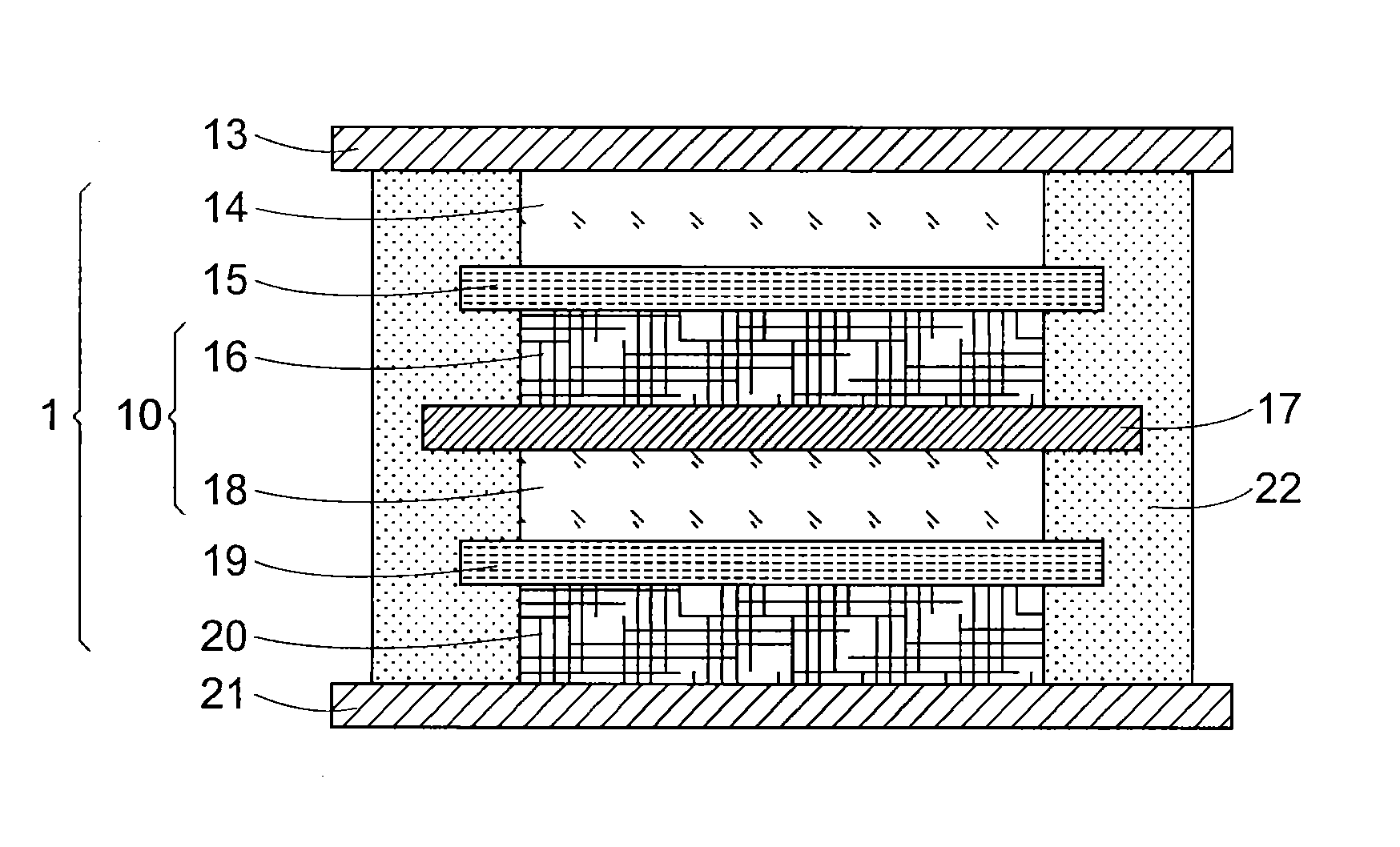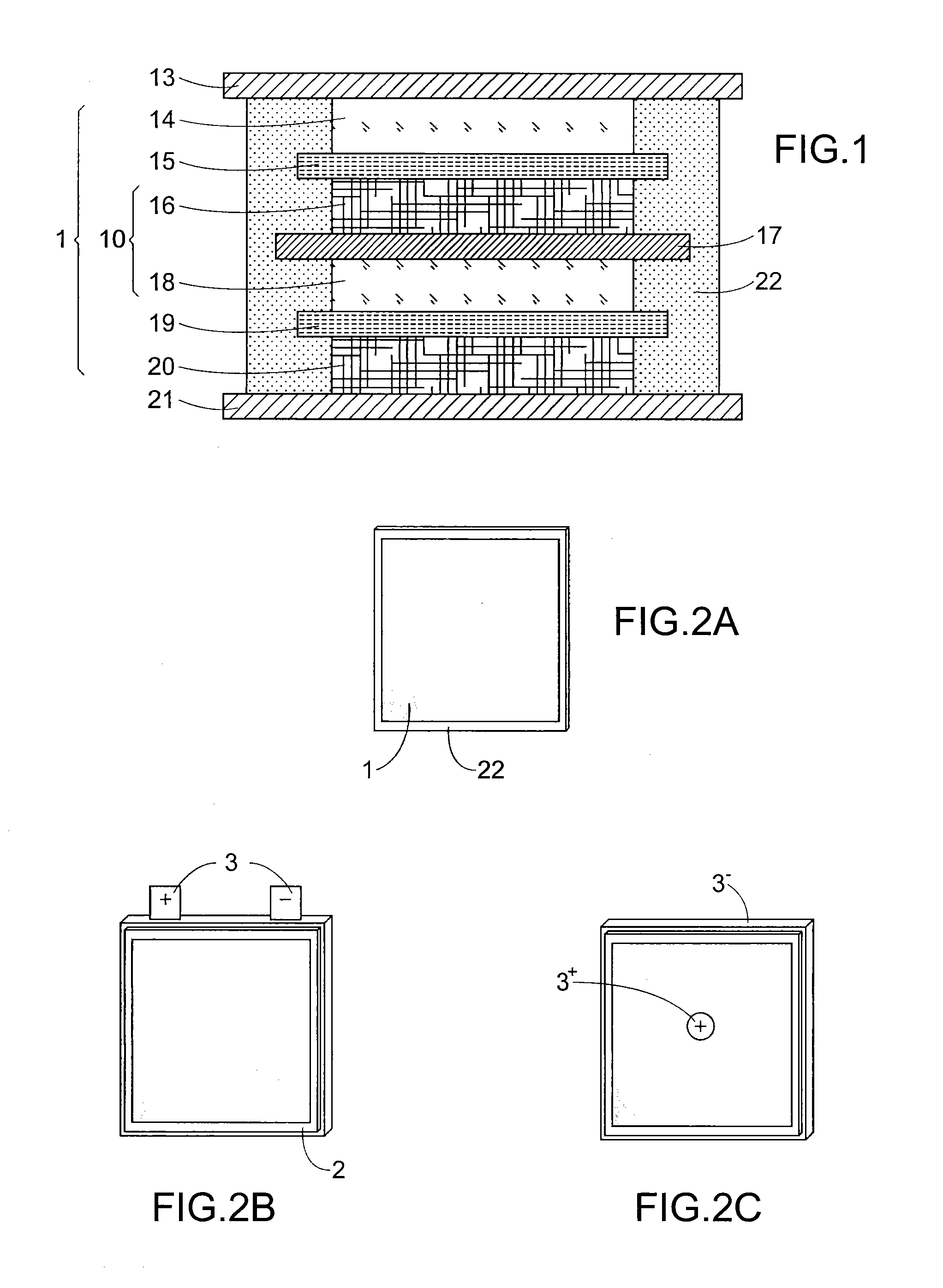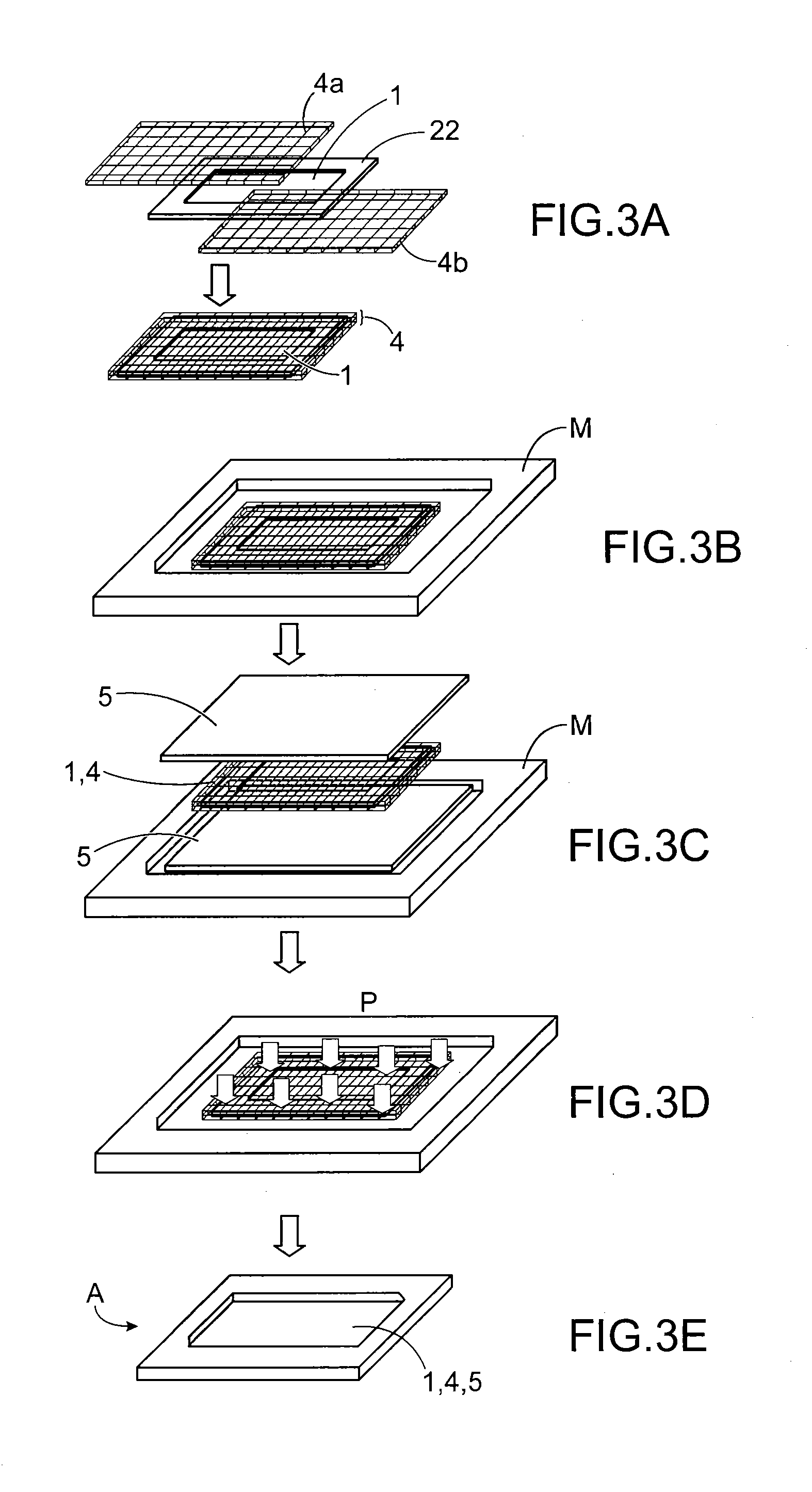Bipolar electrochemical battery with an improved casing
a bipolar electrochemical and casing technology, applied in the field of lithium electrochemical generators, can solve the problems of bipolar batteries that cannot be used for pressure, and neither flexible casing type cited allows pressure to be applied, etc., to achieve satisfactory dimensional stability, improve thermal and mechanical properties, and high vitreous transition temperature tg
- Summary
- Abstract
- Description
- Claims
- Application Information
AI Technical Summary
Benefits of technology
Problems solved by technology
Method used
Image
Examples
Embodiment Construction
[0063]Other advantages and characteristics of the invention can be deduced on reading the detailed description given as an illustration, and not restrictively, with reference to the following figures which represent respectively:
[0064]FIG. 1 is a schematic, lengthways section view of a lithium bipolar battery according to the state of the art without its casing,
[0065]FIG. 2A is a front view showing a bipolar element according to the invention without its casing,
[0066]FIG. 2B is a front view showing a lithium-ion bipolar battery including a bipolar element with its flexible casing according to the state of the art,
[0067]FIG. 2C is a front view showing a lithium-ion bipolar battery including a bipolar element with its rigid casing according to the state of the art,
[0068]FIGS. 3A to 3D are perspective schematic exploded views showing the different steps of manufacture of a lithium-ion bipolar battery with its casing according to the invention,
[0069]FIG. 3E is a perspective view of a li...
PUM
| Property | Measurement | Unit |
|---|---|---|
| pressure | aaaaa | aaaaa |
| pressure | aaaaa | aaaaa |
| pressure | aaaaa | aaaaa |
Abstract
Description
Claims
Application Information
 Login to View More
Login to View More - R&D
- Intellectual Property
- Life Sciences
- Materials
- Tech Scout
- Unparalleled Data Quality
- Higher Quality Content
- 60% Fewer Hallucinations
Browse by: Latest US Patents, China's latest patents, Technical Efficacy Thesaurus, Application Domain, Technology Topic, Popular Technical Reports.
© 2025 PatSnap. All rights reserved.Legal|Privacy policy|Modern Slavery Act Transparency Statement|Sitemap|About US| Contact US: help@patsnap.com



